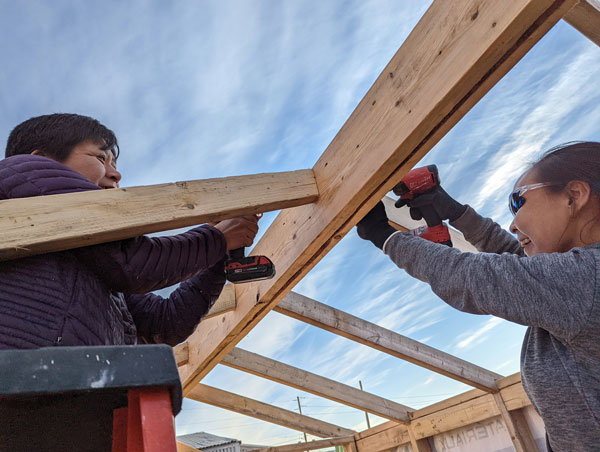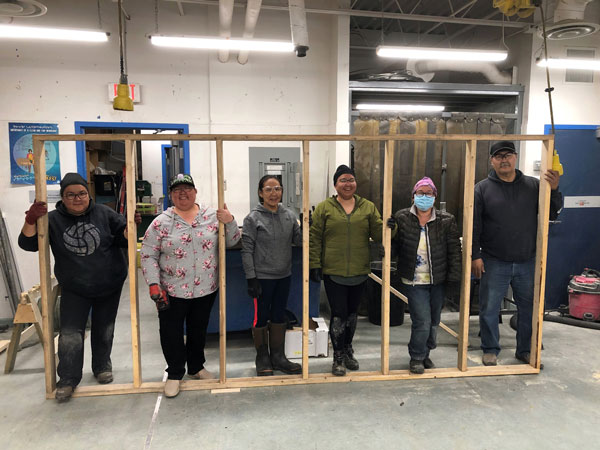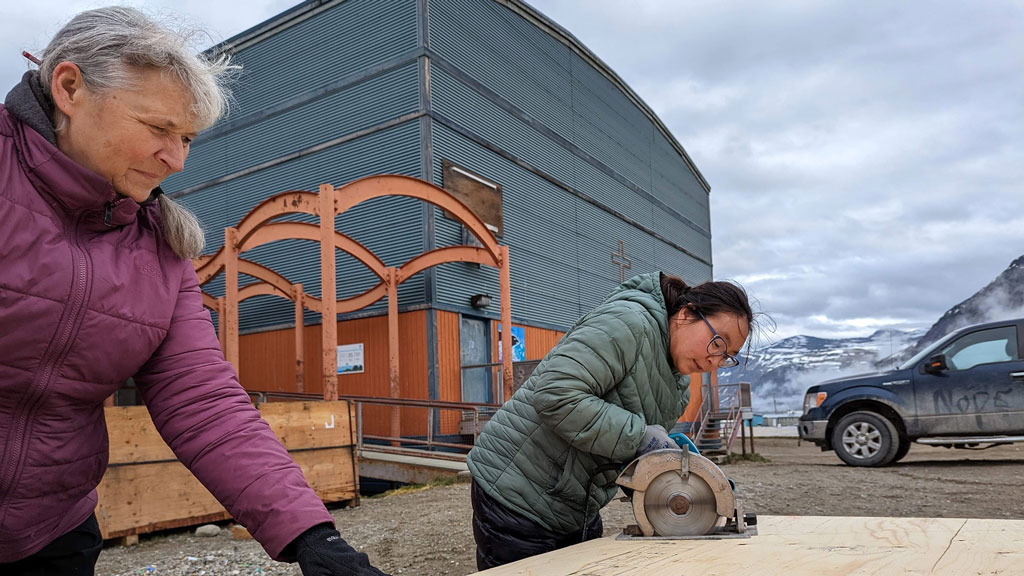For many of the Inuit women taking a three-week course in Pangnirtung, Nunavut on how to build a wood-frame cabin, using power tools was a scary first-time experience and few knew a rafter from a header.
“Some of them had helped their partners or husbands on projects before, but Inuit women aren’t (normally) builders and none of them had actually done a building project. Some had never even picked up a hammer or saw,” says the course’s organizer Cathy Lee.
What the women, ranging from 35 to 60 years old, didn’t lack was enthusiasm.
Lee, the hamlet’s high school principal, teamed up with Alan Kilabuk, a local instructor and experienced carpenter, to put on the course recently in the Far North village of 1,500 residents.
Initially the eight students were taught construction safety procedures, how to take accurate measurements and they learned “the names of the tools” and their purposes.
By the time they were finished the course, the women had built a 12-by-eight-foot insulated wood frame cabin with a steel roof.
Lee says participants took the course to learn how to build a cabin for storage, craftwork, sewing/knitting and to use as a social gathering space. In some cases, the women said they simply wanted to be able to build a place to call their own.
For 52-year-old Rose Tina Alivaktuk, the course was an eye-opener to what she could do with a hammer, saw and a few good power tools. Born and raised in Pangnirtung, Alivaktuk had assisted her husband, a journeyman carpenter, on various projects, but the course helped her “connect the dots” on the how-tos of wood frame construction.
“I feel really empowered because now I can make my own building,” Alivaktuk says, noting she plans on constructing a sunroom onto the family home. “It is something I could do myself, though I know my husband will help, from the things we learned in this cabin building course.”
The class started in Pangnirtung’s high school shop where walls and other elements were prefabricated before final assembly was done on the property outdoors, says Lee, who grew up in a family where building things was common.
While builders in southern Canada are experiencing supply chain woes resulting from the pandemic, in like Pangnirtung building material shortages are nothing new.

There are no local building supply chains and material deliveries by the sea from Montreal occur during the short summer season.
Lee says some of the lumber for the project was donated by local supplier Sak’s Amiaq & Rentals and instructor Kilabuk donated the steel roof.
The cabin’s door and window – both in “pretty good shape”- were sourced at the local dump.
“We budgeted about $5,000 for materials but we haven’t had to spend that much.”
While Lee hasn’t firmed up plans for another course, there is plenty of interest.
She got 60 responses from women after two days of advertising the initial course on Facebook.

“At first we thought we would have six participants but Alan and I decided because of the strong interest, we could increase the number to eight. We picked the names out of a hat, so to speak.”
Alivaktuk, who took detailed notes in class and made step-by-step diagrams of the building assemblies, hopes to one day offer a course of her own to Inuit women.
She says the experience was valuable not just for the carpentry skills she learned but also for the friends she gained.
There was a positive energy among the students, a camaraderie built from a common experience, an important element to the course after most residents spent the better part of the past two years in a pandemic bubble.
Funded by the Nunavut government, the project is administered by the hamlet of Pangnirtung. Plans call for the women’s cabin to be donated to a local group focused on community wellness.



Recent Comments